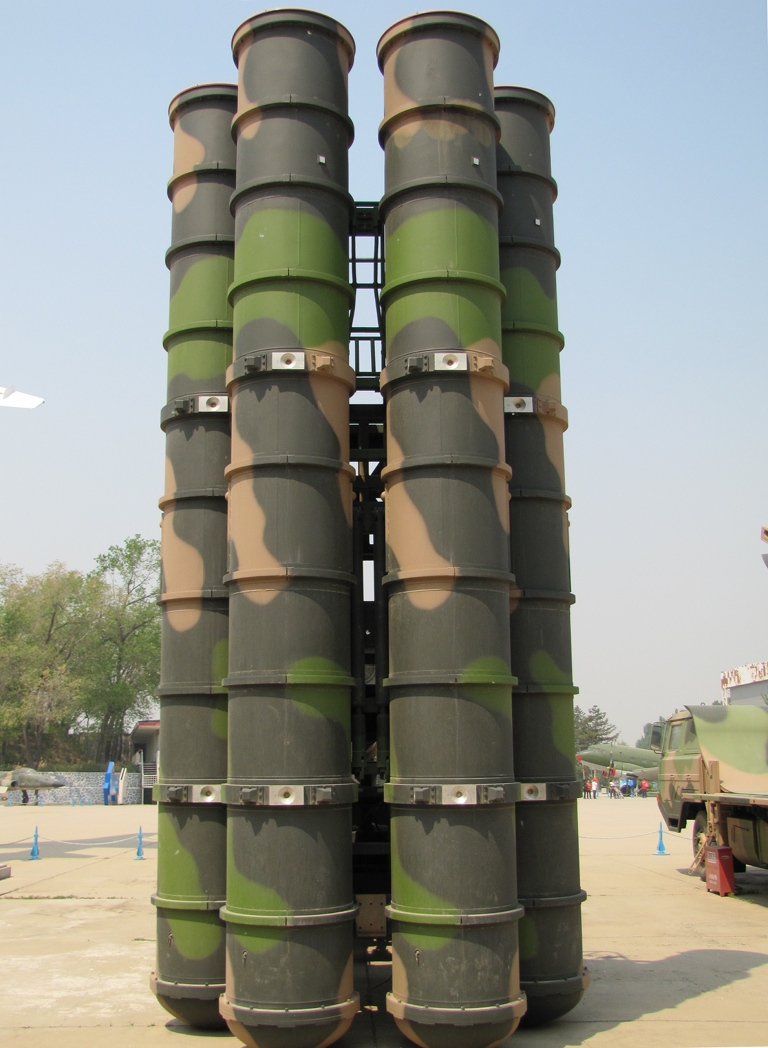eagle20054
FULL MEMBER

- Joined
- Nov 21, 2007
- Messages
- 162
- Reaction score
- 0
In an interview with the Global Times newspaper, Rao Qamar Suleman, air chief marshal of the Pakistan Air Force has confirmed the rumors that Pakistan Air Force will purchase up to four Chinese Surface-to-Air Missiles to meet its airdefence needs.



Air Chief Marshal Rao Suleman has said that Pakistan air force is evaluating, different Chinese surface-to-air missiles for the purchase of 3 to 4 SAM systems. One of the systems under evaluation is "HQ-18"surface-to-air missile system.
As per Jane's Defence weekly Hong Qi-18 (HQ-18) surface to air missile system is Chinese version based on the S-300 that is also known as SA-12A "Gladiator". HQ-18 system has a rand of 100 km and it can be used against short-range ballistic and cruise missiles as well as against aircraft.
Another surface to air missile that may be under consideration is China's indigenously developed HQ-12 / KS-1A SAM. These surface-to-air missiles are available with two engagement radars H-200 phased array radar and SJ-231 phased array radar.
The SJ-231 radar system for the KS-1A/HQ-12 SAM system is based on the on the HT-233 PESA engagement radar which is associated with the advance Chinese surface-to-air missile system HQ-9 / FD-2000. SJ-231 is a self propelled radar.
China's indigenously developed HQ-12 / KS-1A missile is a single stage missile that uses the solid propellant. It has very short span delta wing design that is very much like that of the US Hawk SAM. KS-1A Missiles uses the rail launchers. Depending upon the target’s speed maximum range of KS-1A varies from 38-50km. It can be used against targets flying as high as 27000m and as low as 300m.
Pakistan Military Review: Pakistan Air Force to Purchase 4 Chinese SAM Systems
---------- Post added at 03:05 PM ---------- Previous post was at 03:05 PM ----------


KS-1A

HQ-18




Air Chief Marshal Rao Suleman has said that Pakistan air force is evaluating, different Chinese surface-to-air missiles for the purchase of 3 to 4 SAM systems. One of the systems under evaluation is "HQ-18"surface-to-air missile system.
As per Jane's Defence weekly Hong Qi-18 (HQ-18) surface to air missile system is Chinese version based on the S-300 that is also known as SA-12A "Gladiator". HQ-18 system has a rand of 100 km and it can be used against short-range ballistic and cruise missiles as well as against aircraft.
Another surface to air missile that may be under consideration is China's indigenously developed HQ-12 / KS-1A SAM. These surface-to-air missiles are available with two engagement radars H-200 phased array radar and SJ-231 phased array radar.
The SJ-231 radar system for the KS-1A/HQ-12 SAM system is based on the on the HT-233 PESA engagement radar which is associated with the advance Chinese surface-to-air missile system HQ-9 / FD-2000. SJ-231 is a self propelled radar.
China's indigenously developed HQ-12 / KS-1A missile is a single stage missile that uses the solid propellant. It has very short span delta wing design that is very much like that of the US Hawk SAM. KS-1A Missiles uses the rail launchers. Depending upon the target’s speed maximum range of KS-1A varies from 38-50km. It can be used against targets flying as high as 27000m and as low as 300m.
Pakistan Military Review: Pakistan Air Force to Purchase 4 Chinese SAM Systems
---------- Post added at 03:05 PM ---------- Previous post was at 03:05 PM ----------


KS-1A

HQ-18


























